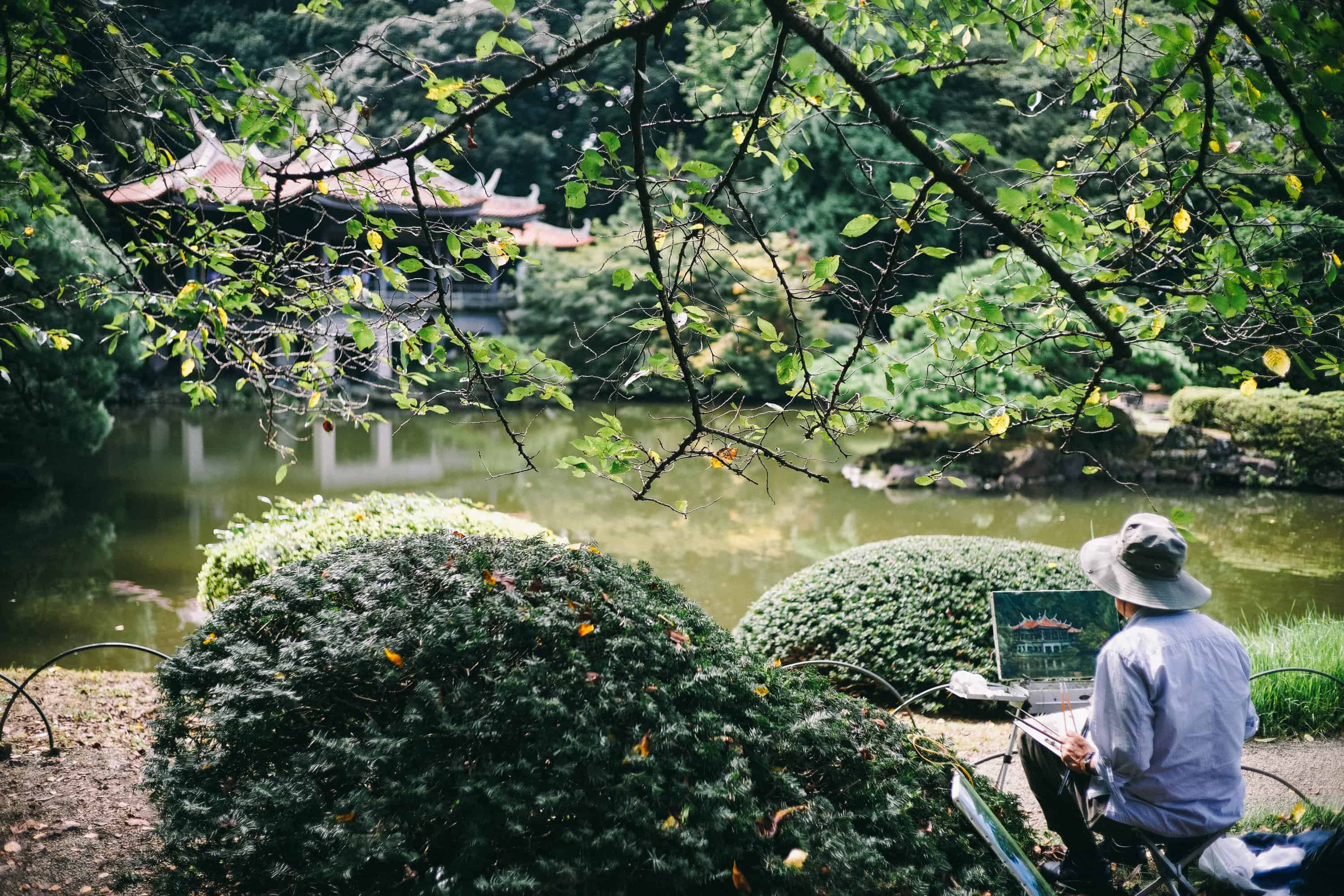Beautiful gardens are everywhere in Japan, and chances are, you will find yourself wandering through more than a few on your trip.
Known as places for meditation, relaxation and reflection, Japanese gardens mix design with philosophical ideas to create a serene, aesthetically pleasing environment.
Japanese gardens are generally one part of a dwelling, created to be viewed from a temple, tea house, residence or pavilion. Traditional Japanese gardens take one of two forms: dry, Zen-style gardens (karensansui) made of rock and gravel, or strolling gardens, which highlight the interaction between foliage and water features.
Read on for some background on how these gardens are created, along with a few top recommendations of ones to visit in Kyoto, where magical, inspiring landscapes are especially abundant.
Design basics
Seasonality is an important factor in garden design. Typically, a layout contains evergreen basics, such as pine trees and bamboo, that maintain their beauty all year. These evergreens are then mixed with seasonal foliage, like cherry and maple trees, which reach their respective peaks in different seasons to balance the appearance year-round.
In strolling gardens, paths lead visitors around the land in a way that highlights the best views of the property. Made of sand, gravel or stepping stones, these paths also work to control where visitors can walk in order protect the more delicate vegetation, like moss. Paths are also used for design purposes and to separate different areas of the garden. This way, a path can lead guests to a secluded island or hidden pond, giving wanderers a private moment to appreciate their surroundings.
The extras
Because Japanese gardens are often miniature versions of surrounding landscapes, the decorative features are symbolic of larger elements. Oceans become ponds. Mountains and hills are replaced with rocks and stones. Moss represents an entire forest. In dry gardens, water features like waterfalls and streams are symbolized by carefully raked gravel.
Man-made elements, which include bridges, lanterns and water basins, come in a variety of shapes, sizes and materials and are placed for both practical reasons, offering light and access, and simply aesthetic purposes.
Kyoto must-sees
With over 1,600 temples (and the carefully manicured, surrounding landscapes that go with them), Kyoto is the ideal place for garden exploration. Here are three that you shouldn’t miss.
1. Ryoanji Temple
The Ryoanji Temple rock garden is one of Japan’s most famous Zen gardens. A rectangular design surrounded by low walls, Ryoanji is a classic example of a karensansui, or dry landscape. Known for its small size and simplicity, the garden consists of 15 intentionally placed rocks surrounded by meticulously raked sand.
2. Okochi-Sanso Villa
One of the top sights in Kyoto, the Okochi-Sanso Villa in the western area of Arashiyama was formerly the estate of the 1920s silent movie star Okochi Denjiro. The garden was carefully designed to bloom year-round, with azaleas, cherry, pine and Japanese maple trees. Stop along the winding pathways to explore various structures that offer unforgettable views of the landscape’s colors and textures. This strolling garden also offers sweeping vistas of the entire city of Kyoto.
3. Ginkakuji Temple
Also known as the Silver Pavilion (the structure is not silver though!), Ginkakuji is a Zen temple in Kyoto’s Northern Higashiyama area. Check out the unique moss garden and the carefully maintained “Sea of Silver Sand” with an elevated expanse called a “moon-viewing platform.” Enjoy the entire property by walking along the circular path through the grounds and stopping for a view of the entire temple and the city beyond

